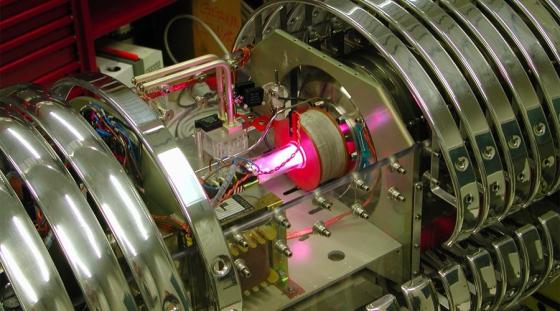For the first time, it has been possible to measure directly at the energies at which stars operate the rate of the reaction that produces most of the neutrons responsible for the formation of all the elements heavier than iron. This opens up a new phase in our understanding of the complex mechanisms that, from the centre of the stars, produce the chemical elements that surround us and make up our world.
LUNA is an international collaboration of about 50 researchers from Italy, Germany, Scotland and Hungary, with the participation of the National Institute of Nuclear Physics (Italy), the Helmholtz-Zentrum Dresden-Rossendorf (Germany), the MTA-ATOMKI (Hungary) and the School of Physics and Astronomy of the University of Edinburgh (UK). In Italy the following collaborate in the experiment: the Gran Sasso National Laboratories of the INFN, the INFN sections and the universities of Bari, Genoa, Milan Statale, Naples Federico II, Padua, Rome La Sapienza, Turin and the INAF Observatory of Teramo.
DIFI has always played a leading role in the LUNA experiment since its birth and in the project of the new phase called LUNA-MV. For about 15 years DIFI has coordinated the international collaboration, trained students and PhD students who are now established researchers in Italy and abroad, and built important parts of the experimental apparatus installed at the Gran Sasso Laboratories.
How are heavy elements produced in stars? The scientific collaboration of the LUNA (Laboratory for Underground Nuclear Astrophysics) experiment, which operates at INFN's Gran Sasso National Laboratories, has recently published new results in the prestigious scientific journal Physical Review Letters that could help us answer this question, which has engaged physicists and astrophysicists for decades.
The results, the fruit of an experimental campaign that lasted about four years, concern a particular process that leads to the production of neutrons from a carbon 13 nucleus and a helium nucleus. Neutrons are crucial for the production of heavy elements, as they can be easily 'captured' by the nuclei in stars, allowing the synthesis of elements heavier than iron, such as Cadmium, Tungsten or Lead.
For the first time, the LUNA collaboration has measured the speed of this process with very high accuracy directly at stellar temperatures, providing invaluable information for building models that reproduce the evolution of a star.
"Until now, our knowledge of this process was based on extrapolations from measurements at higher energies, compared to those of stars, and from indirect experiments." Tells Gianluca Imbriani, spokesperson for the LUNA collaboration. "This led to large uncertainties in the determination of the neutron production rate in stars."
"LUNA is the only experiment that to date has managed to directly measure this neutron production process in the energy window of astrophysical interest, drastically reducing the uncertainties of other experimental results." Add Alba Formicola and Andreas Best, who coordinated the work for this measurement. "This was possible thanks to the very low noise floor that characterises the Gran Sasso National Laboratories and will have a great impact on predicting the formation of a number of heavy elements, the synthesis of which depends strongly on the speed of this process."
The LUNA experiment will continue its scientific activities over the next decade thanks to the project currently underway, LUNA-MV, which will reproduce in laboratories the processes that take place at the heart of large-mass stars.


